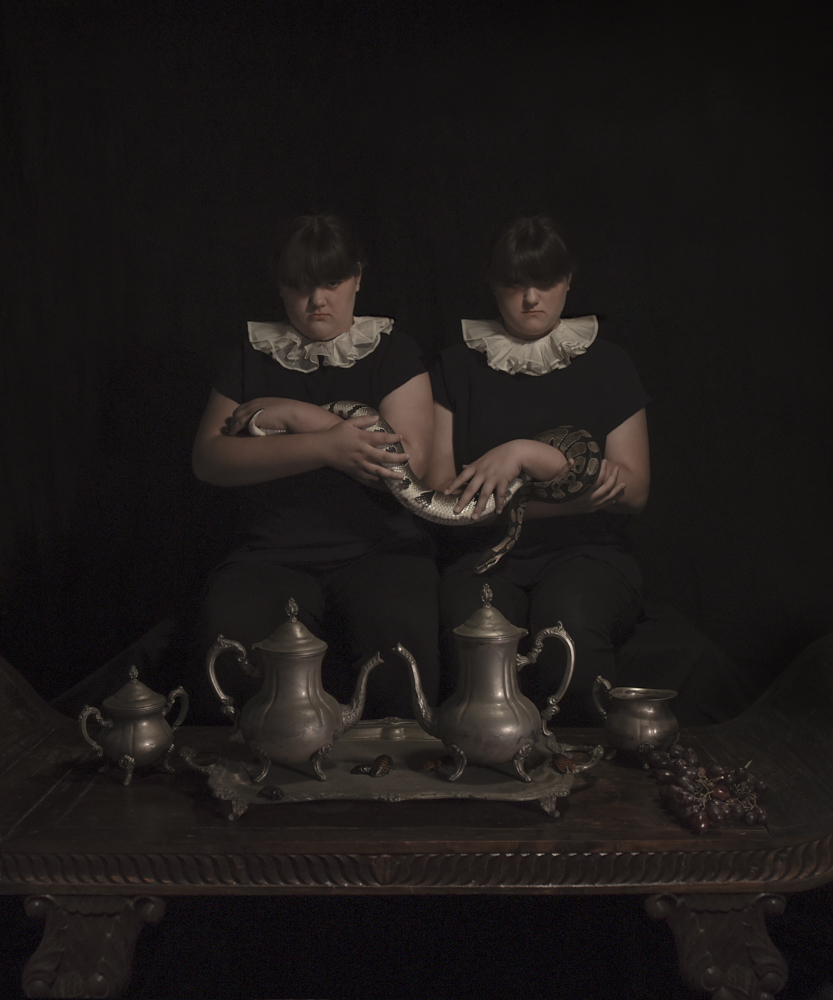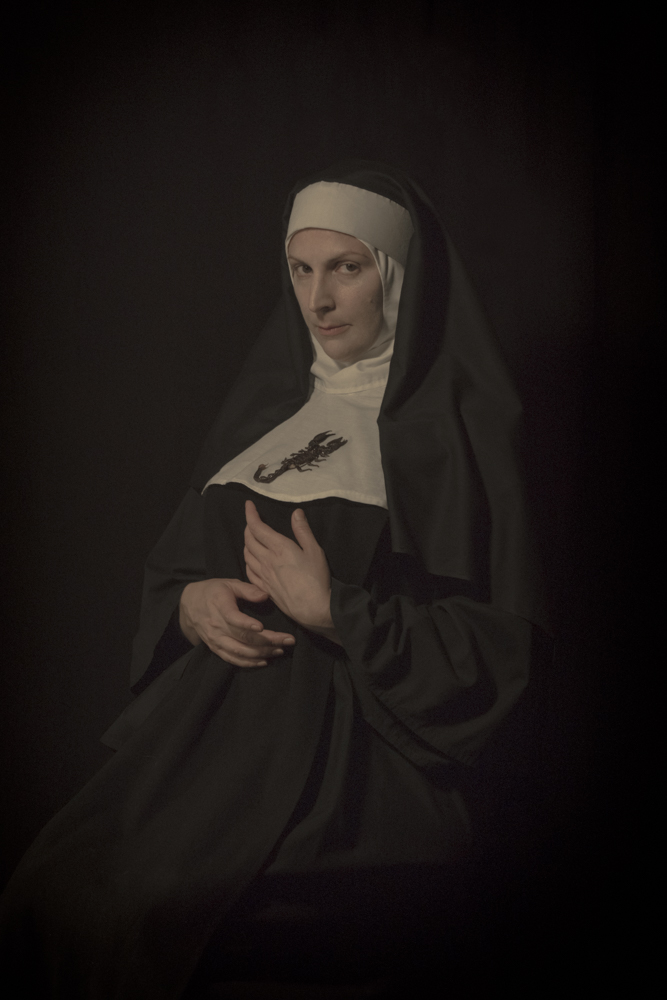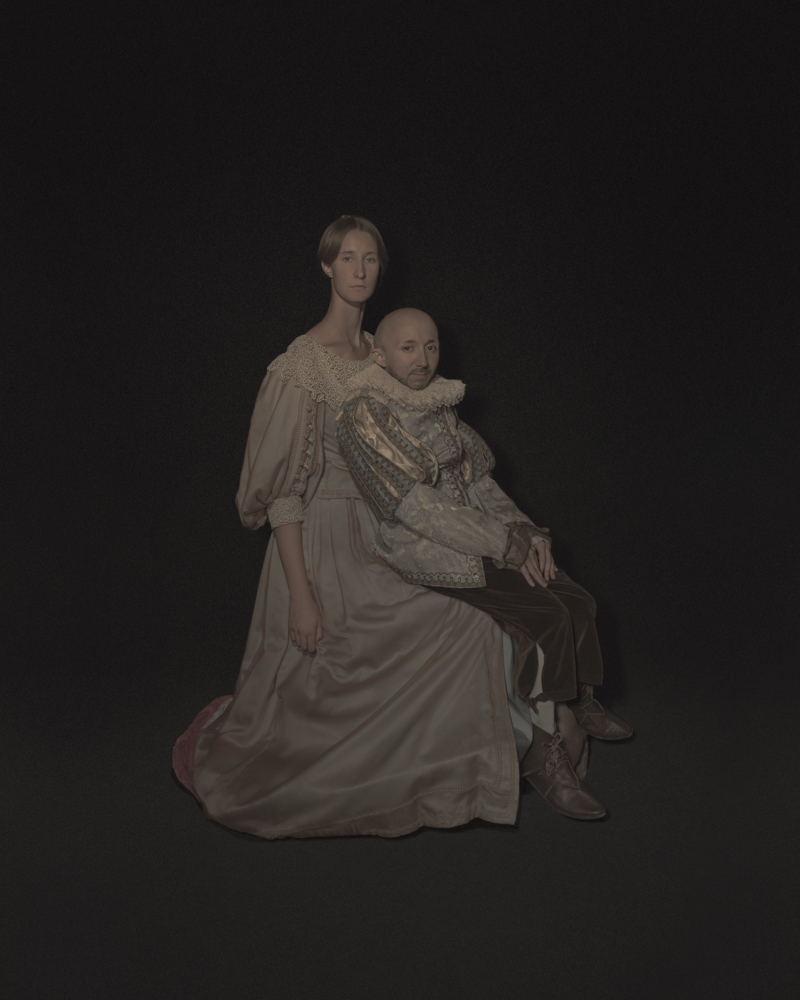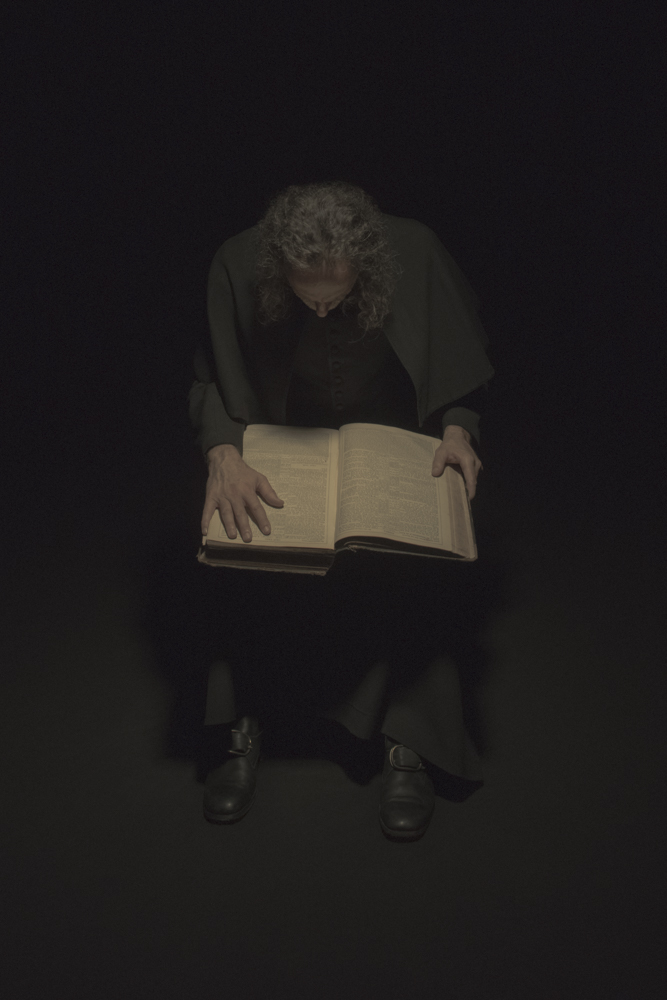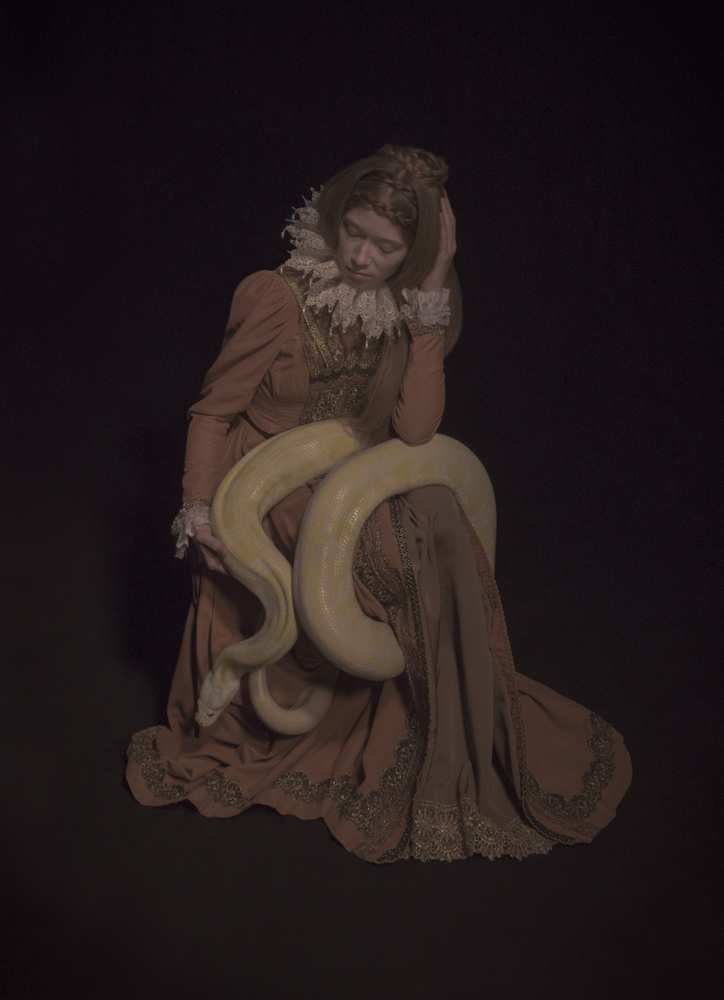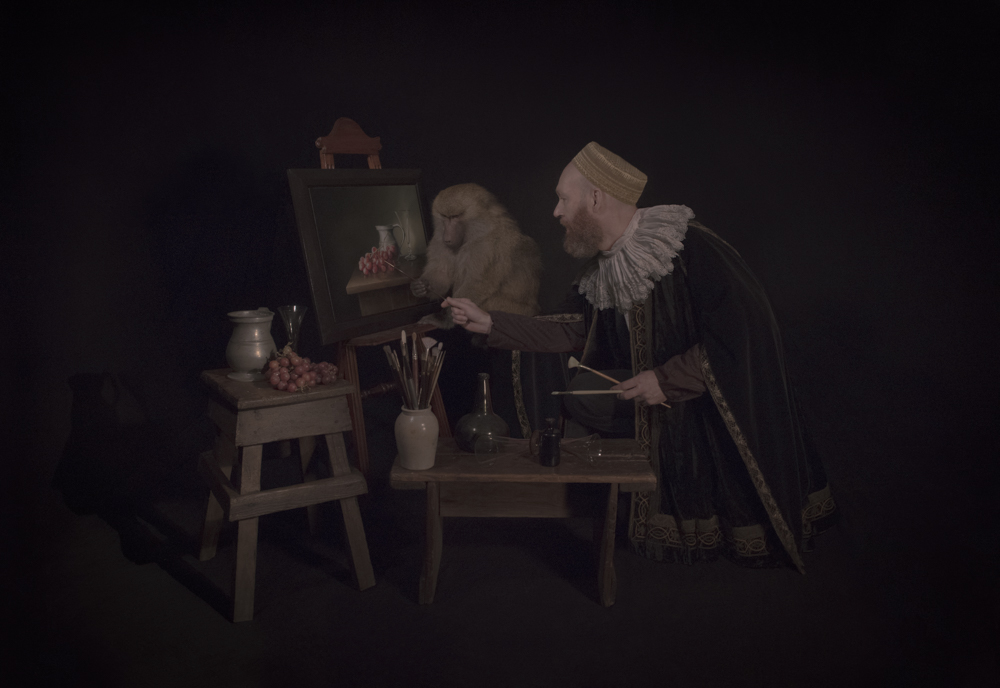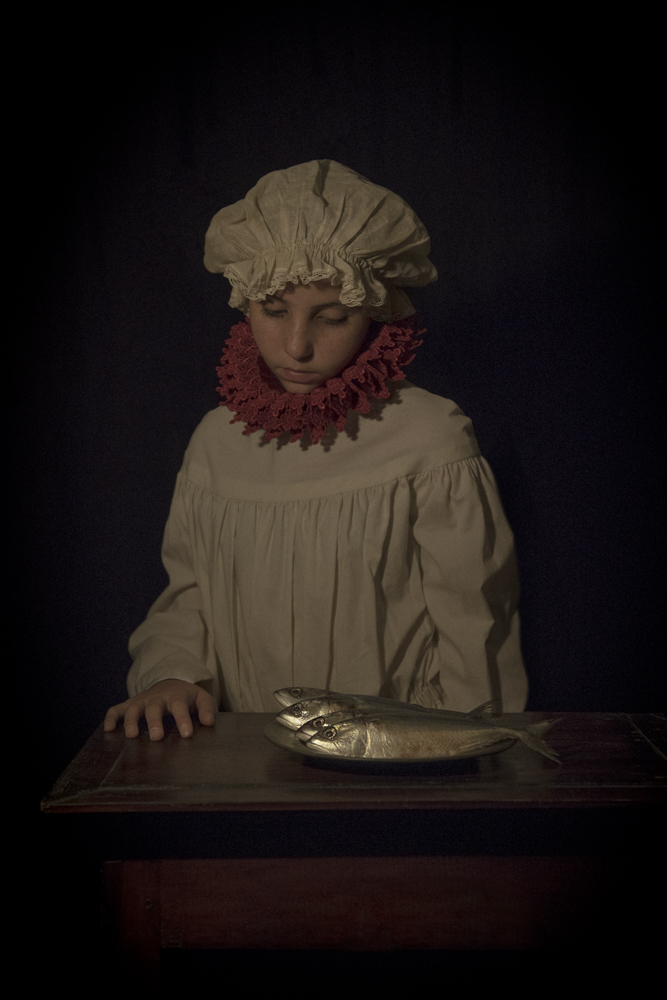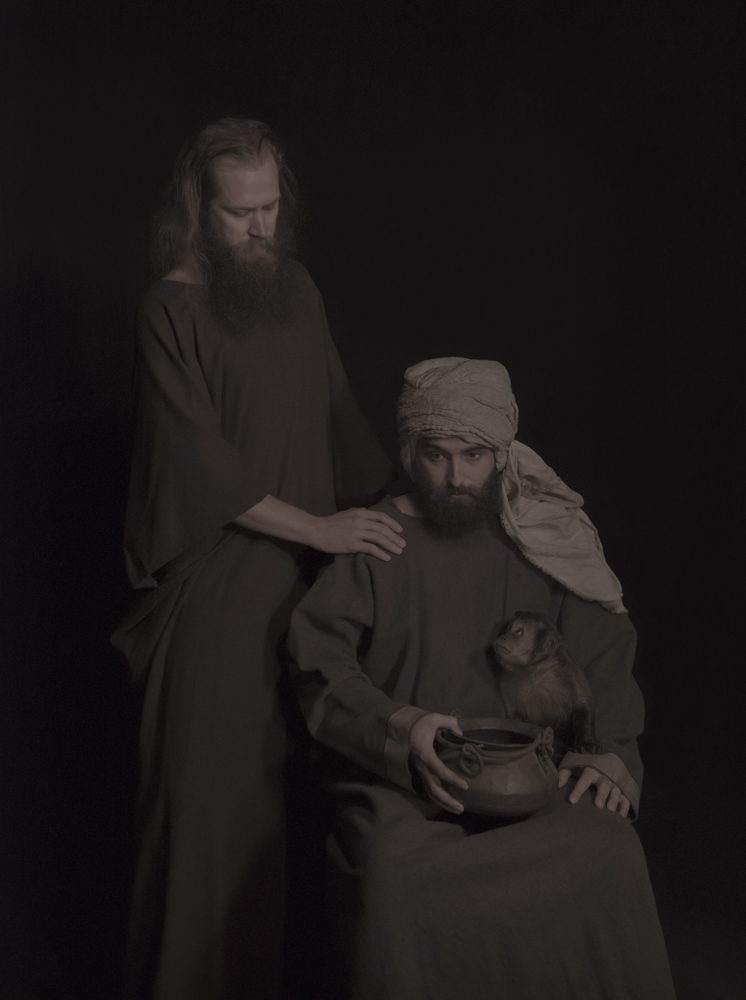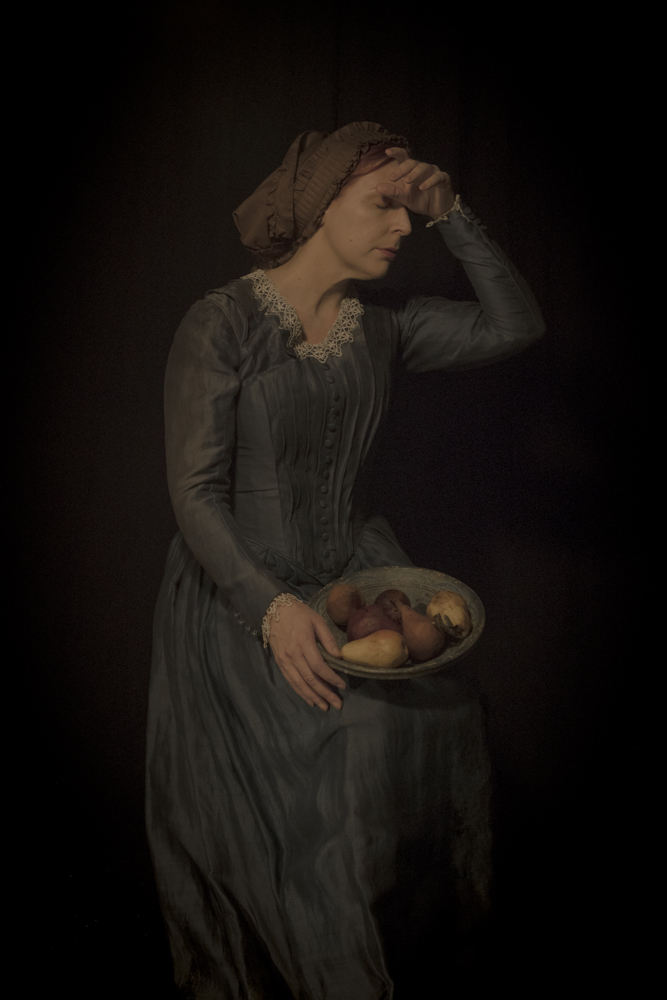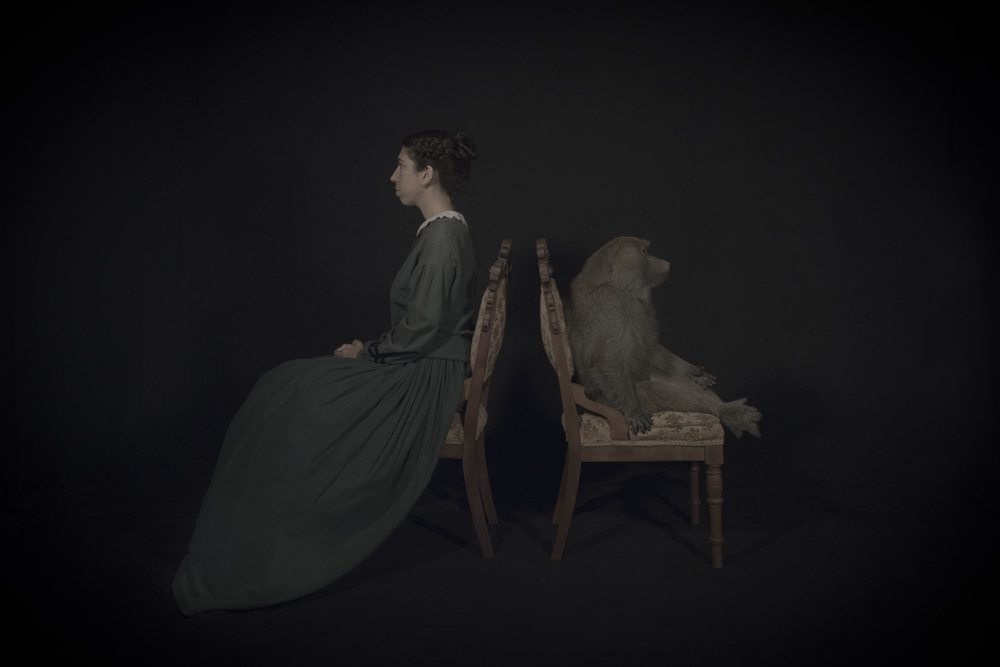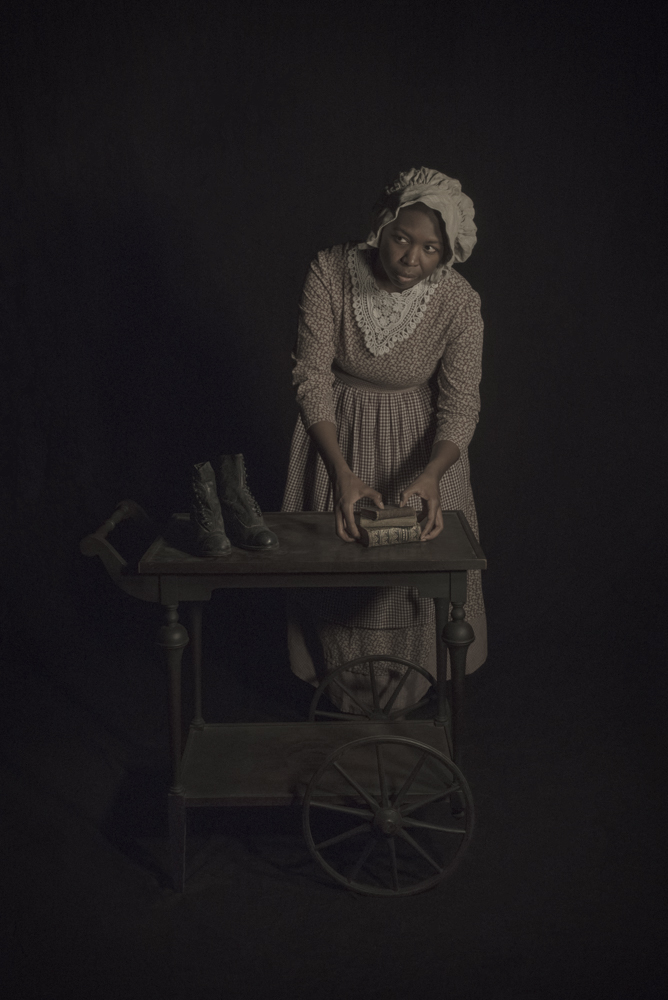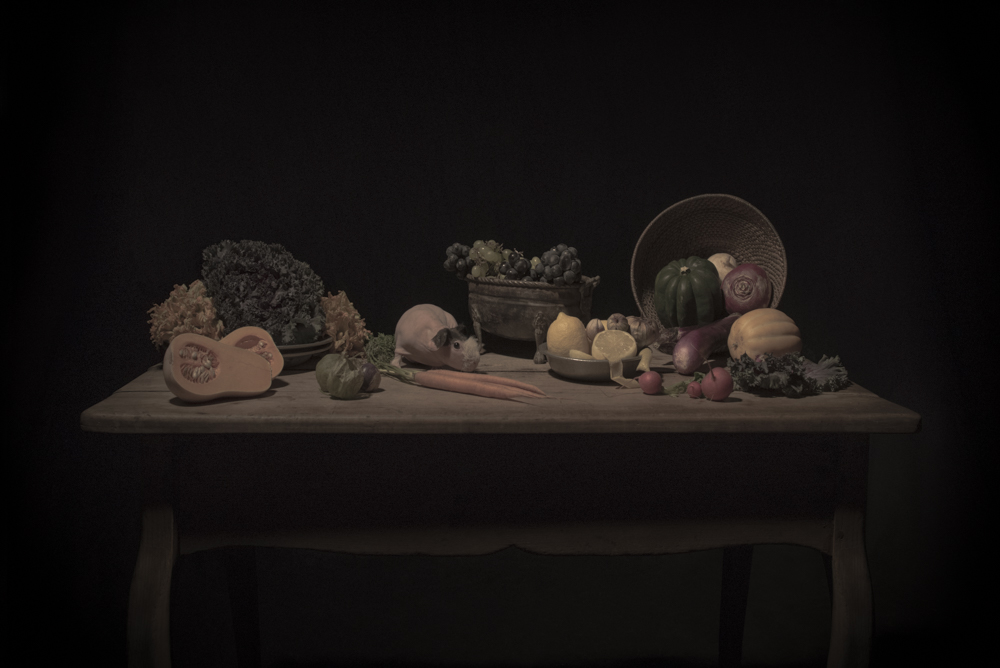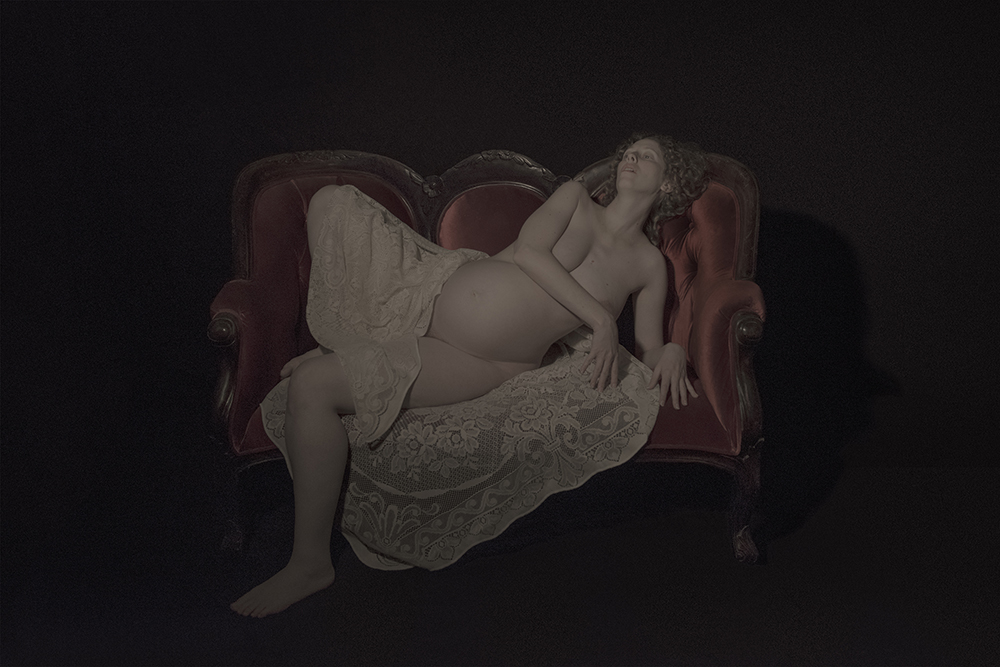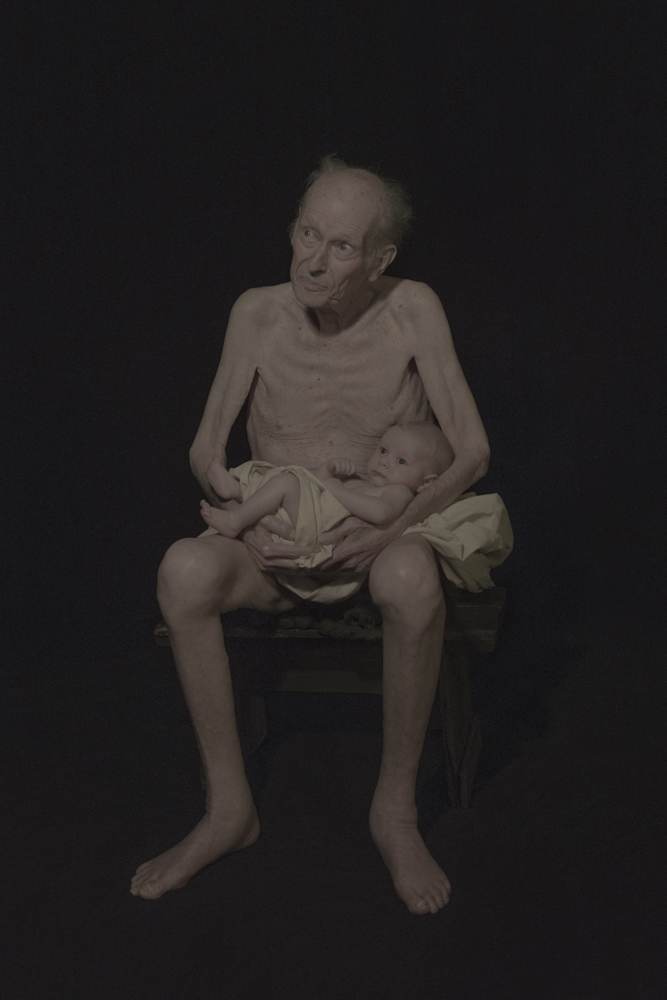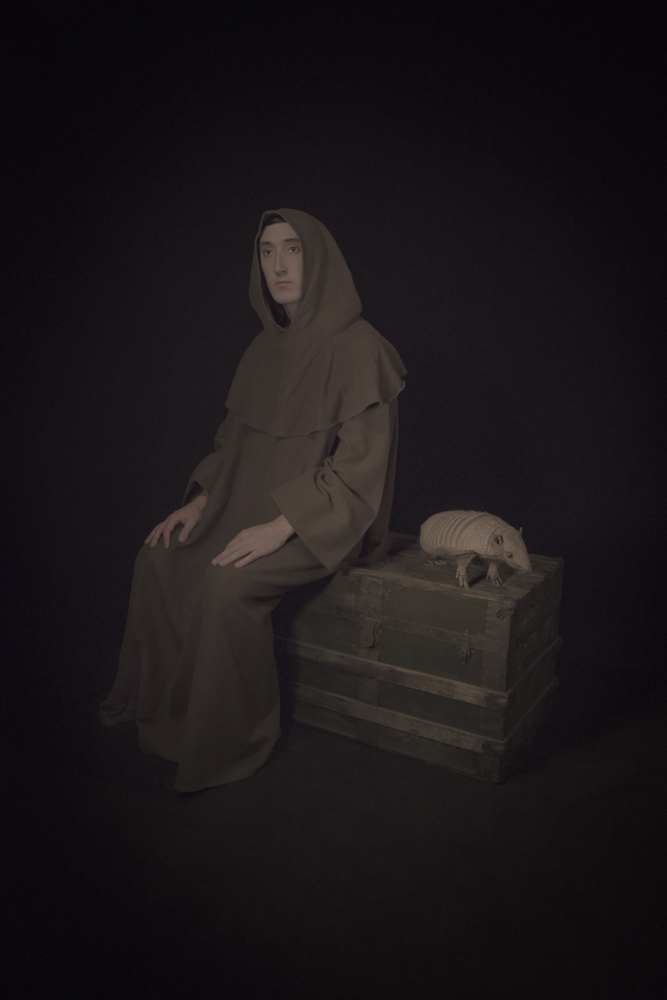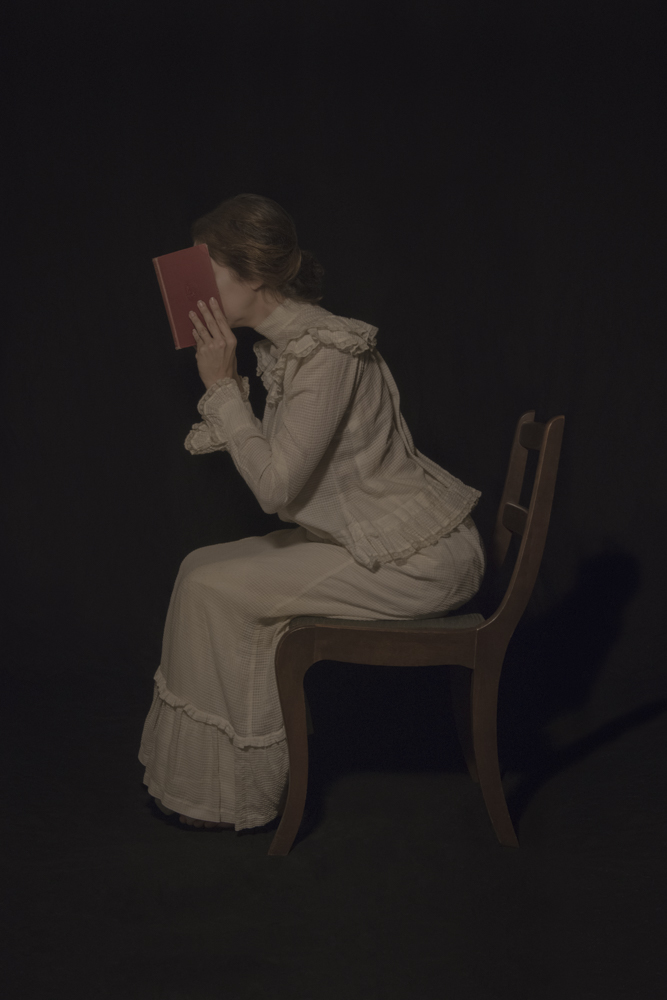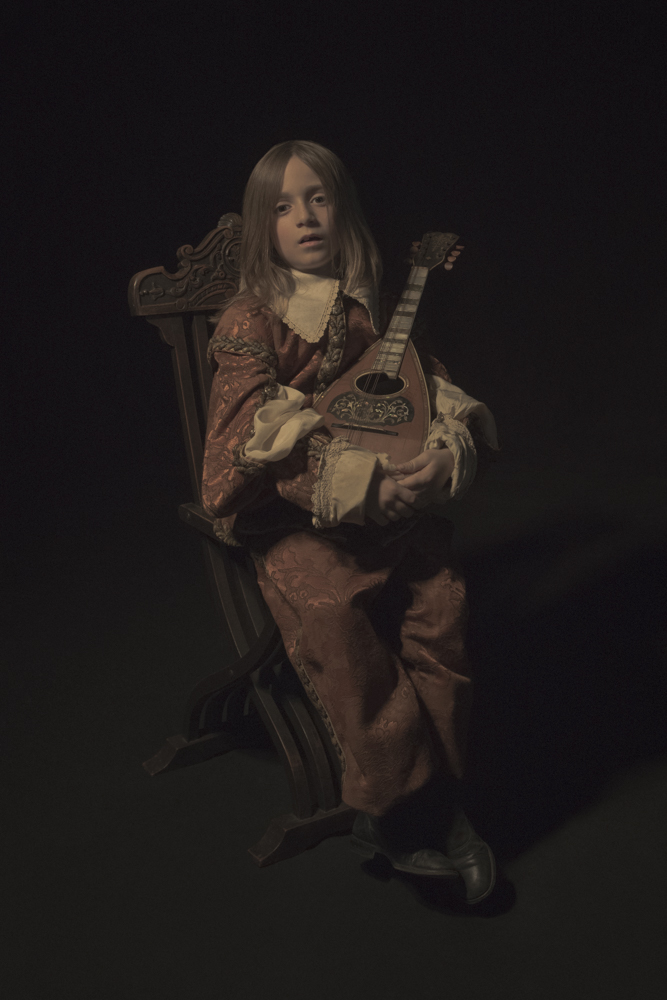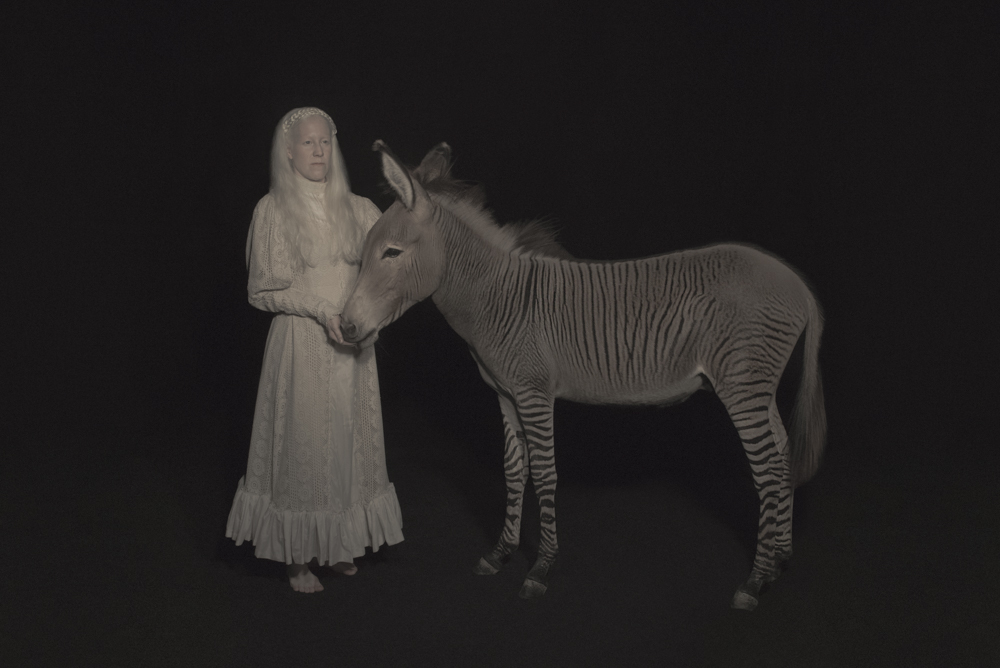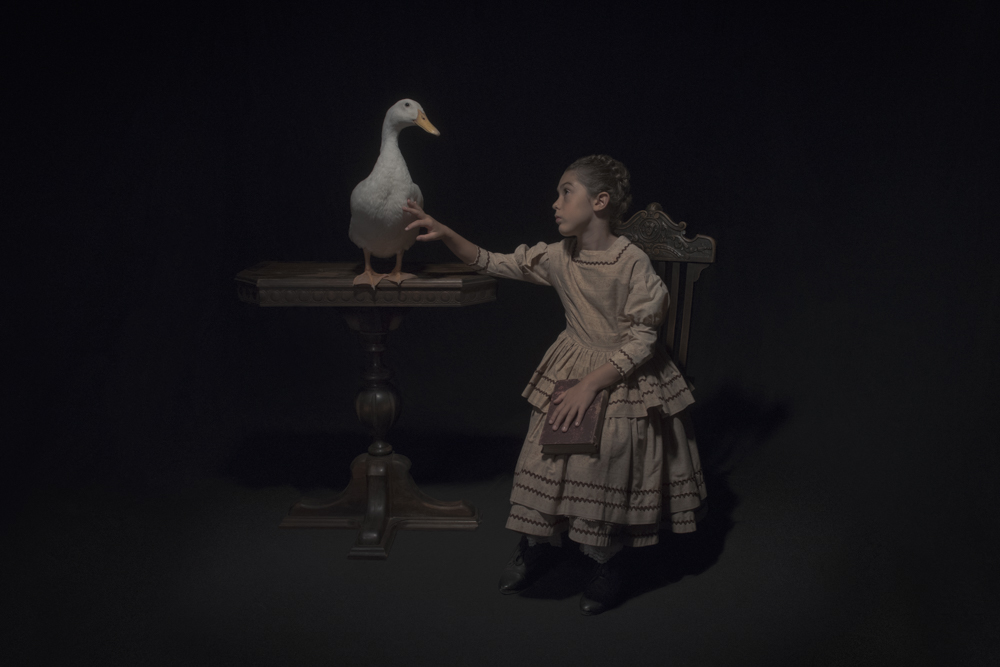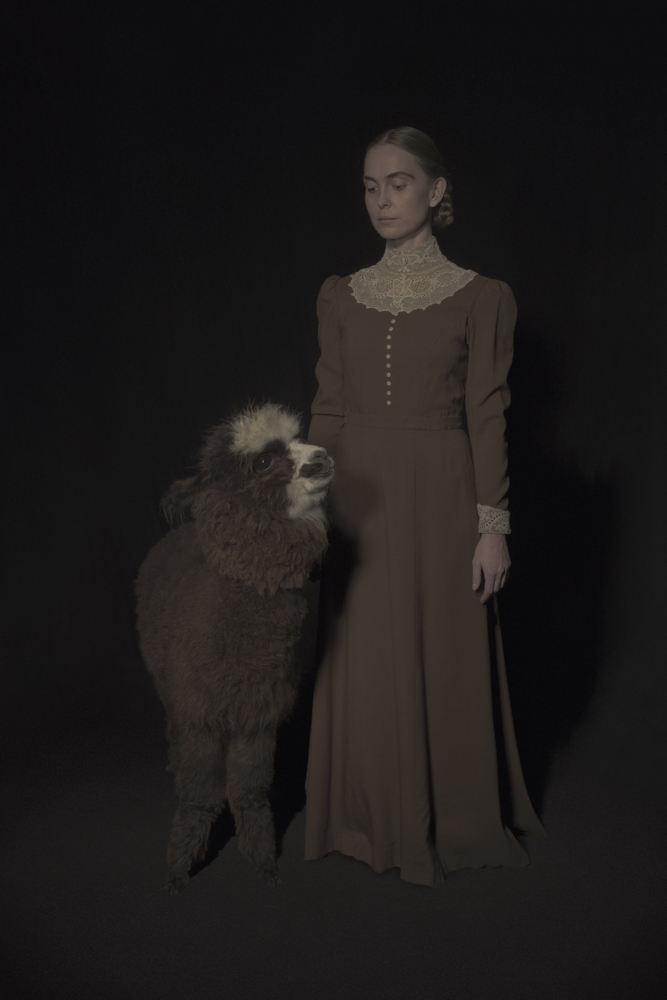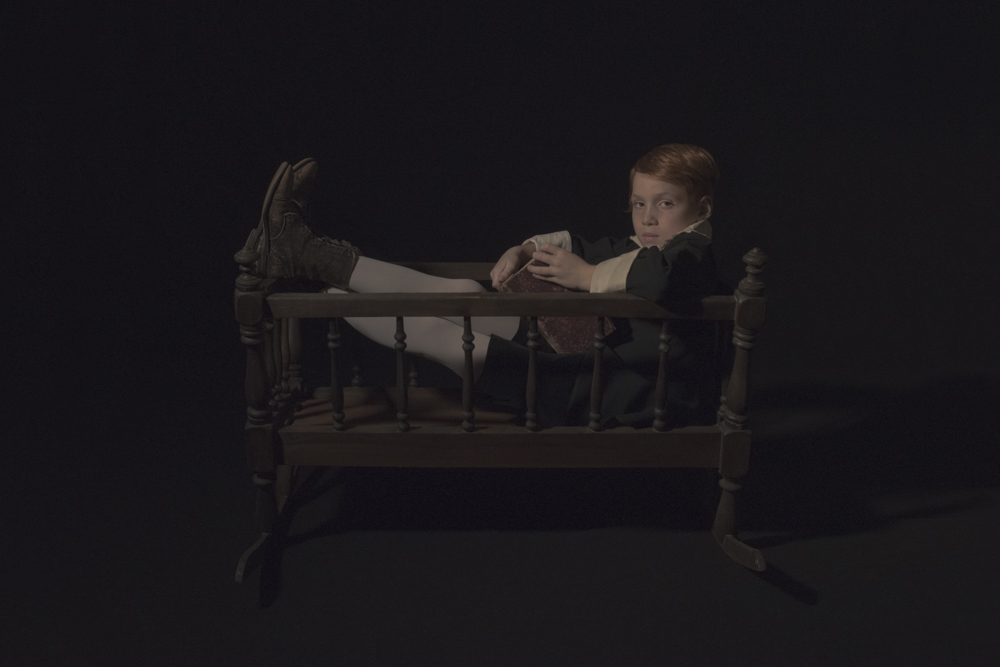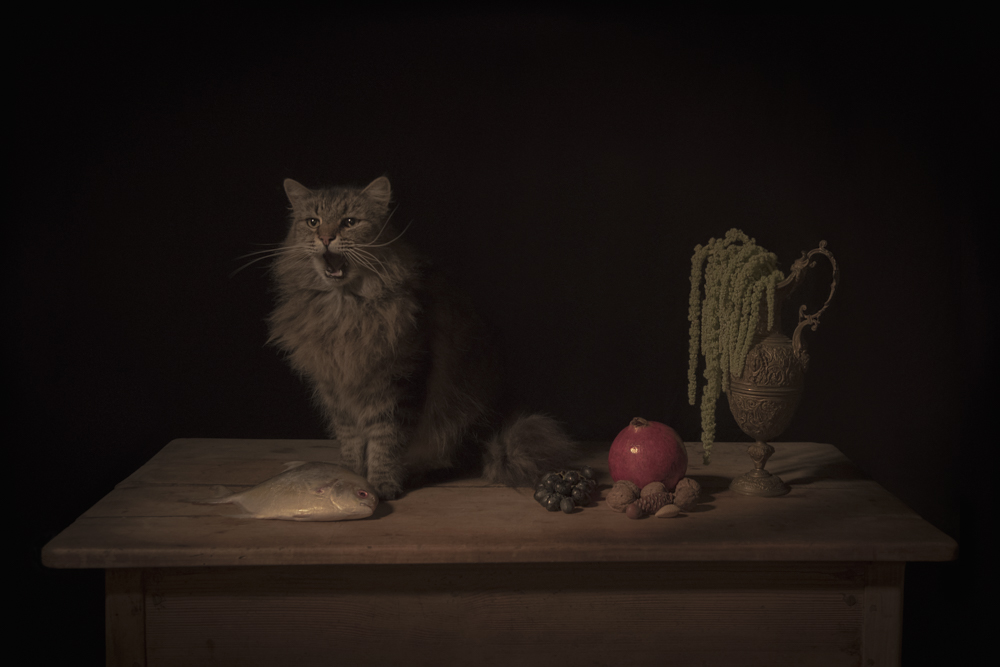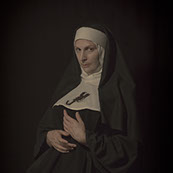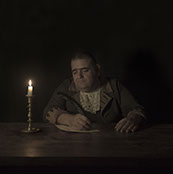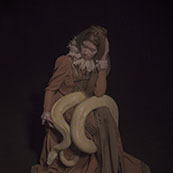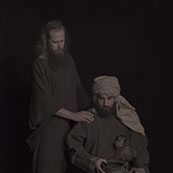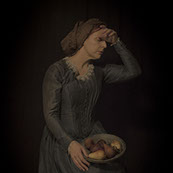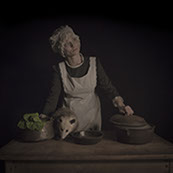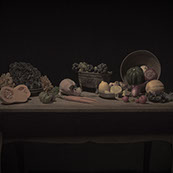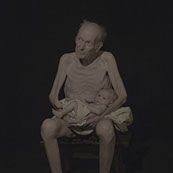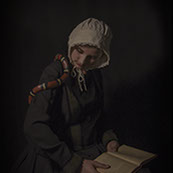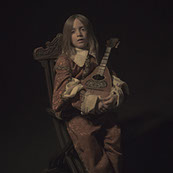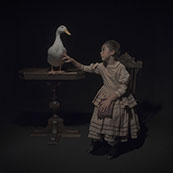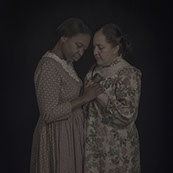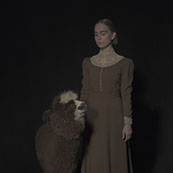Dramatis Personae
“I feel like I’m channeling another lifetime,” says photographer Tami Bahat, speaking about her moody, lush, eccentrically witty Renaissance-inspired portraits. “It’s not studying, it’s more like remembering.” Her Dramatis Personae tableaux depict people interacting with a few carefully-chosen props or set pieces, and sometimes a live animal co-star. Her palette is warm and full, yet the air is slate-stone cold; a world conjured from fully-modeled, high-res chiaroscuro. Her stylized costuming and quirky poses have a cinematic sense of accuracy that matches our expectations of 16th-century lifestyle aesthetics. Combined with the radiant crispness of her focal plane treatment and the bold antique frames, she achieves an effect that is both modern and historical, hybridized and authentic.
Bahat’s style and spirit guides -- Rembrandt, Caravaggio, Vermeer, perhaps Whistler, and a hint of Bill Viola -- are Old Masters who when not on commission but rather on their own time painted the regular people known to them, the household staff, the maids, guards, and farmers. In Bahat’s quest to prove that beauty is for everyone, her work has become increasingly exotic and ambitious, diverse and inclusive. “Working with animals, children, and untrained actors,” she laughs. “It’s alive, unpredictable. One time, a baboon grabbed the paintbrush and went for the easel -- and it was all her own idea!” She is committed to using people from her own life as her models rather than professionals. (The animals handlers are pros.) “As I transform them into art, I bring them into my world. The photographs are our relationships.” Believing that art lives in the humanity of everyday people, she creates her work by measuring this magnanimity against art history, concluding that prettiness doesn’t leave a lot of room for imagination.
In some ways her works are open-ended stories, with social-code and gender ambiguity, presenting seductive, emblematic mysteries along with clues that there is more than meets the eye. “I want you to wonder, who is this person? What is their story?” Bahat looks to the Renaissance and Neoclassical conventions of still-life and chromatic symbolism, adding fine telling details to animate her compositions and hint at the contours of her models’ inner lives. A woman with her nose in a red leather-bound book, the wry and wistful tilt of a letter-writer’s head, the crisp fold of a domestic uniform’s kerchief, the scorpion nestled in a nun’s bosom, the snake curling over the shoulder of a reading maid, the perfect ruching of a lady’s fainting couch. Bahat’s gift for the details of Art History access it as international language of emotion. But at the same time, she is careful to leave room for the audience to bring something of their own to experience, as we all bring our own lives to everything we look at.
--Shana Nys Dambrot
Los Angeles, 2017

